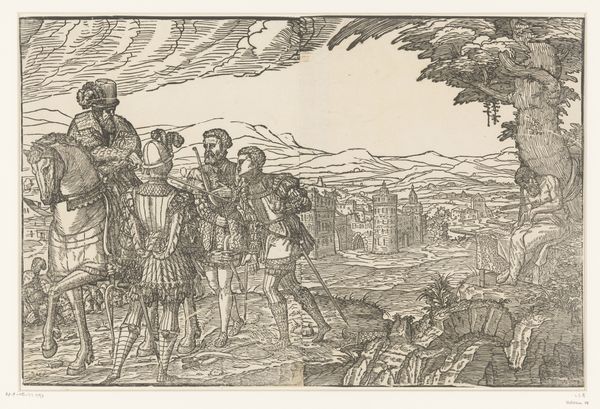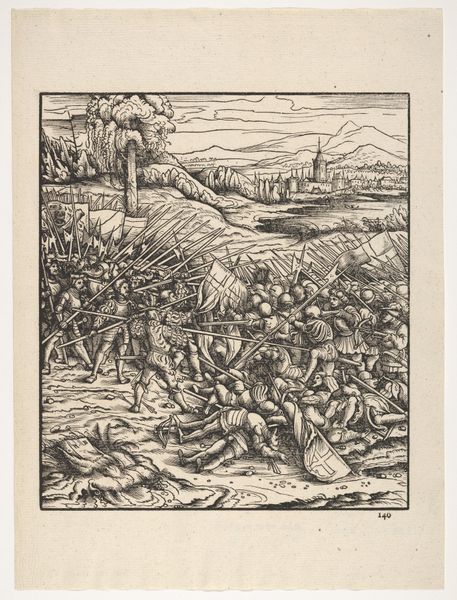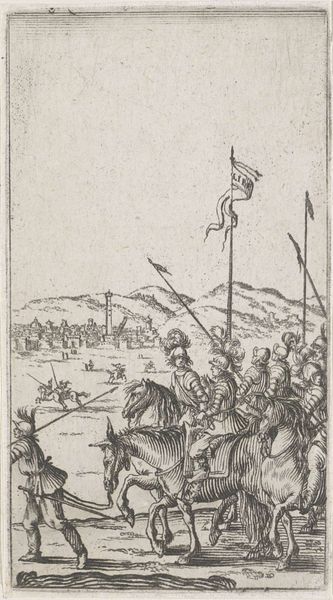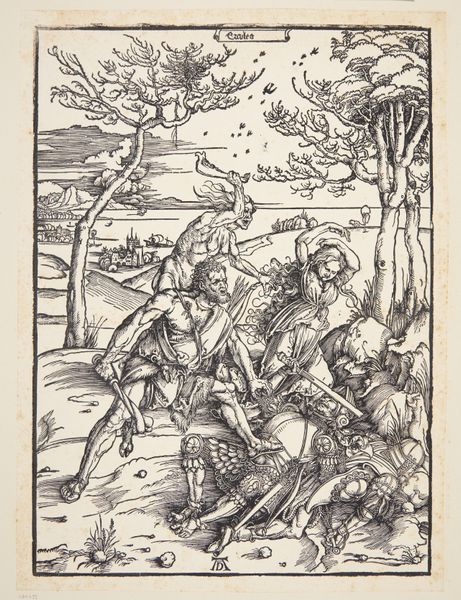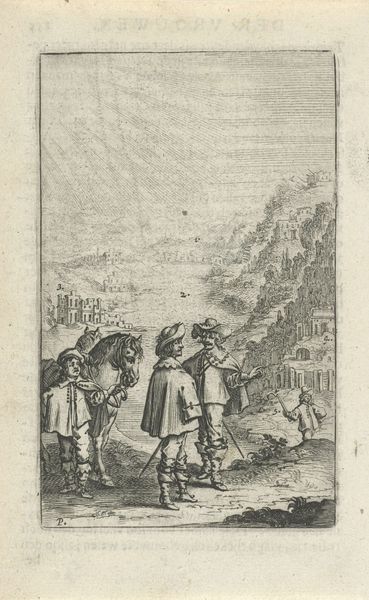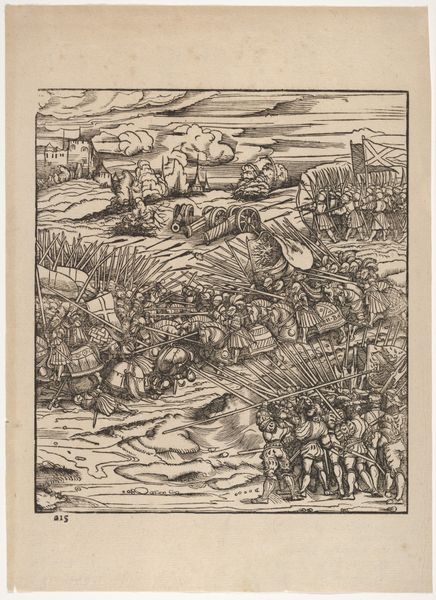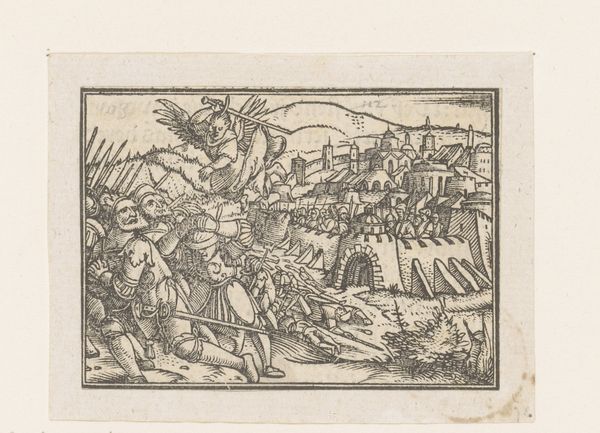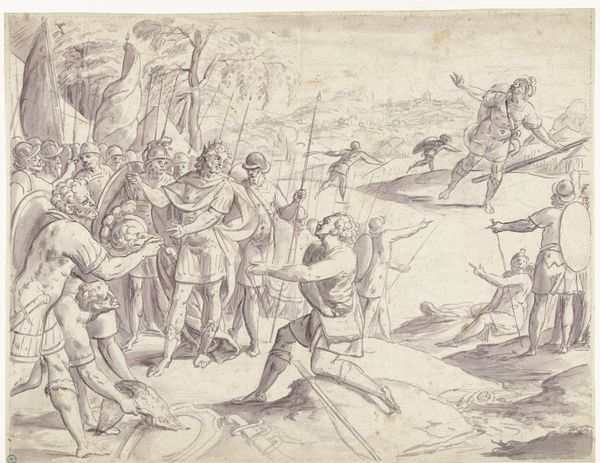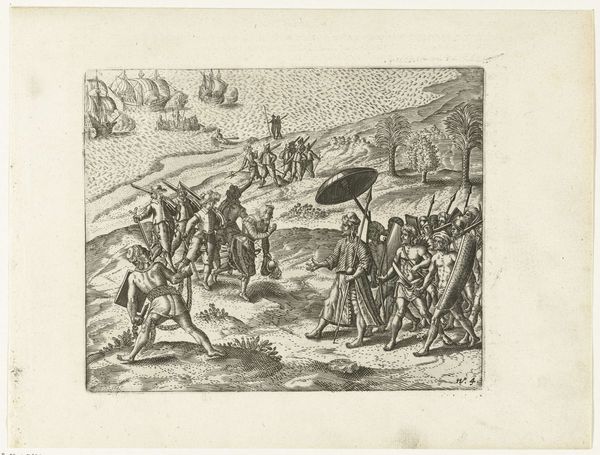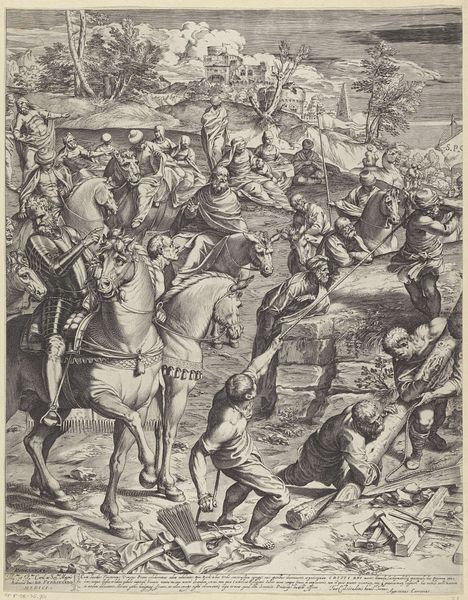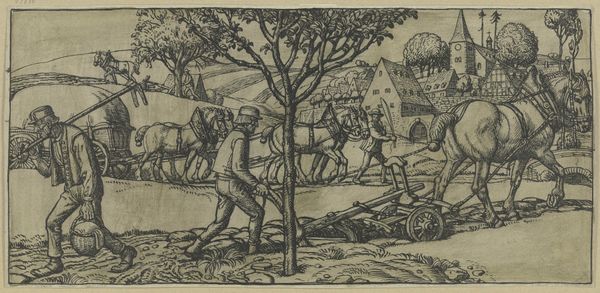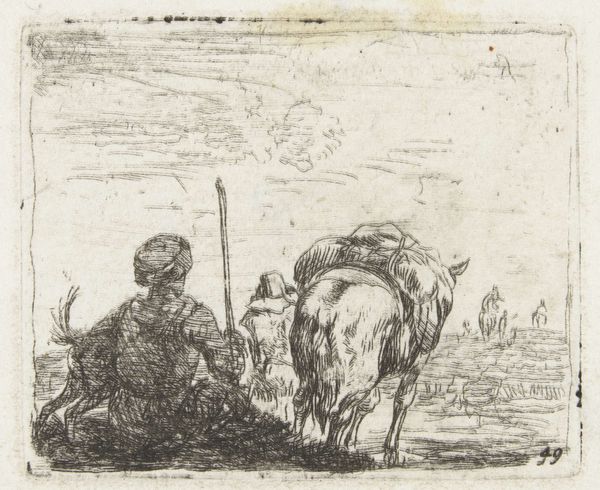
drawing, print, ink, engraving
#
drawing
#
baroque
#
pen drawing
# print
#
landscape
#
figuration
#
ink
#
genre-painting
#
history-painting
#
engraving
Dimensions: height 130 mm, width 75 mm
Copyright: Rijks Museum: Open Domain
Curator: Here we have Abraham Dircksz. Santvoort's engraving, "Two Fighting Men near a Military Camp," created around 1667. Editor: The dynamism is quite striking. Even rendered in print, the tension of the moment—two figures locked in combat before a backdrop of armed anticipation—jumps out immediately. The scale seems somewhat off though; the combatants are dwarfed. Curator: Note how Santvoort employs hatching and cross-hatching to define form and create areas of shadow, which adds significantly to the drama. Also observe the division of space into three clear layers: a foreground of soldiers, the middle ground with the duel itself, and the background depicting the sprawling military encampment. Editor: Indeed. And doesn't this staging tell us much about the piece's context? These weren't just gladiatorial games. These formalized fights speak volumes about the militaristic society of the Dutch Golden Age. We’re observing an explicit power structure at play in this genre scene. Curator: Precisely. One cannot ignore the figures observing the duel—the detail afforded them in contrast with the more anonymous soldiers to the back implies their greater relative power or influence within the hierarchy. This juxtaposition suggests the theme of class, visible not only in the spatial representation of foreground/background but in terms of who is the actor versus observed. Editor: The very public nature of this event raises further questions. Was this a ritualized display of masculinity, or was it a form of military discipline made into public entertainment? This moment could serve as both warning and inspiration for onlookers. This form of dissemination through printed material further reinforces ideas surrounding militarization within Dutch society during the Baroque period. Curator: To your point, note the landscape elements—a town perched upon a hill, rendered as being "overlooked" by the military site—as adding another element of spatial relationship of power. Santvoort invites the viewer to analyze a militaristic gaze from various angles. Editor: This examination allows one to look past just surface aesthetic value to decode meaning and subtext within the socio-political atmosphere through historical artistic techniques such as engravings from the mid-seventeenth century onward. Curator: I find I agree. Looking closely reveals nuanced composition decisions adding complexity on societal and cultural values for both contemporary viewers and even today.
Comments
No comments
Be the first to comment and join the conversation on the ultimate creative platform.
